When it comes to driving safety, tire pressure is always one of the hottest topics. Why does tire pressure matter? What the heck is that little annoying symbol on my dashboard? Should I under-inflate my tire during the winter? How often should I check my tire pressure?
We got tons of questions like this from our community, so for today, let's dive deep into the world of tire pressure, put our geeky glasses on and figure out everything you need to know about your tires.
1. What's The Recommended Tire Pressure For My Car?
The recommended tire pressure varies based on the vehicle makes determined by the manufacturer after thousands of tests and calculations. For most vehicles, you can find the ideal tire pressure on the sticker/card inside the driver’s door for newer cars. If there’s no sticker, you can usually find the info in the owner’s manual. Normal tire pressure is usually between 32~40 psi(pounds per square inch) when they are cold.
So make sure you check your tire pressure after a long stay and usually, you can do it in the early morning.
2. How To Check The Tire Pressure?
After knowing the proper tire pressure of your vehicle recommended by the manufacturer, you should check your tire pressure regularly to make sure that you are in good shape.
You can check your tire pressure in auto part stores, the mechanics, gas stations, and at home. To check tire pressure at home, you need:
As tire pressure changes with the temperature a lot, and recommended tire pressures are cold inflation pressure, you should start with cold tires if possible. We mostly check the tire pressure after one night's rest to avoid the heat from the friction of the last drive, and before the temperature goes up.
Unscrew the valve cap and press the tire gauge onto the valve stem hard enough until the hissing sound disappears.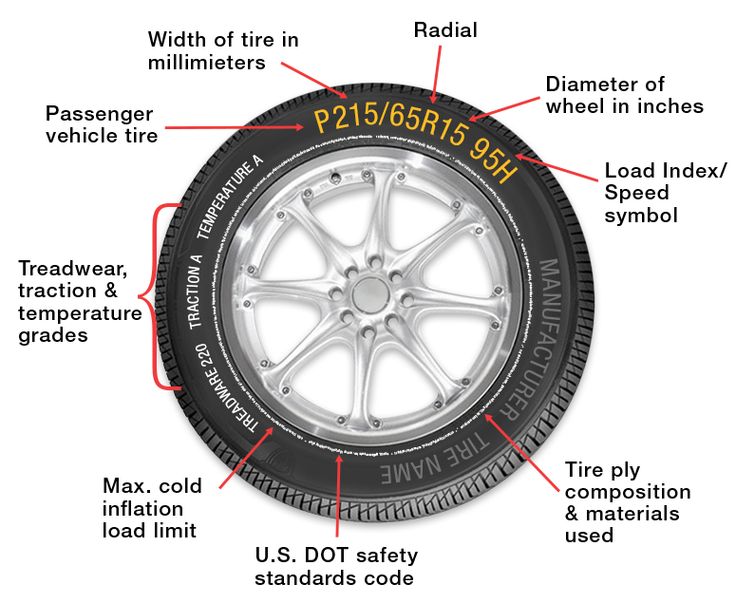 There should be a reading as long as the gauge is well connected to the tire.
There should be a reading as long as the gauge is well connected to the tire.
You can then note down the tire pressure of each tire, and compare them with the ideal psi you read from inside your driver’s door or in the owner’s manual. Make sure you read in detail, as for some vehicles, front and rear tires have different recommended psi.
If you find a tire underinflated, use the air compressor to fill your tires. You can either buy an air compressor in the auto parts store or use one in a gas station. Remember to rest your tires for at least half an hour to make sure they’re cold and the reading is accurate. If you have to fill your tires when the tires are hot, inflate them 3~4 psi above the recommended psi, and check again with your gauge when they are cold. It’s ok to overinflate a bit when filling the tires, as you can let the air out with the gauge.
After filling the tires, use your tire pressure gauge to check the tire pressure again and make sure they are in a good range.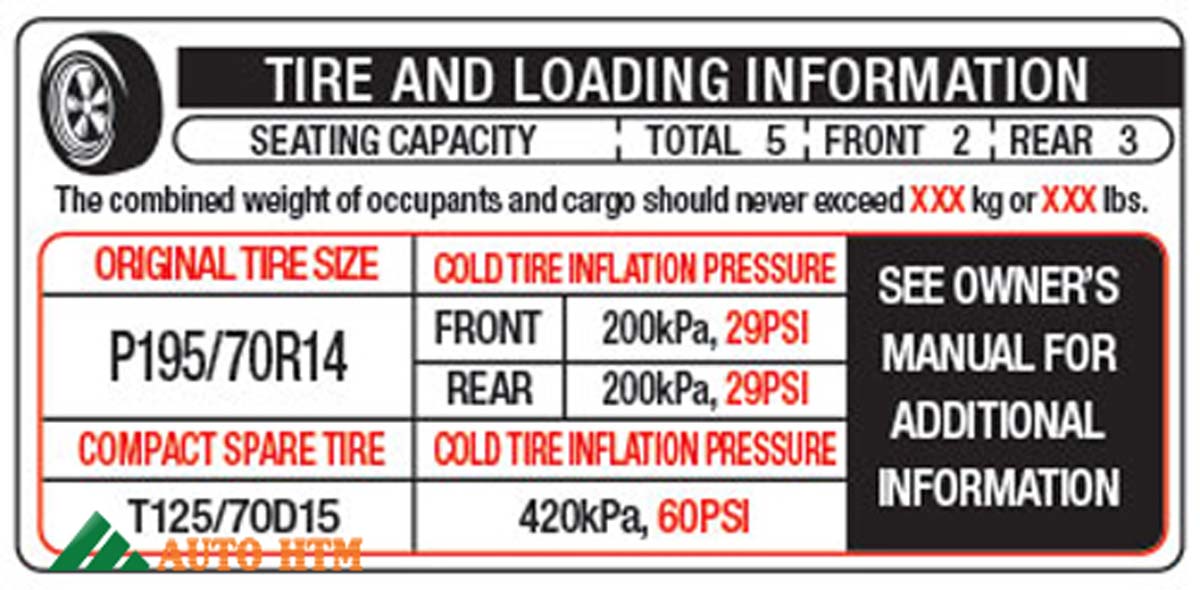 Let the air out a bit if they are over-inflated by pressing the gauge harder on the valve stem.
Let the air out a bit if they are over-inflated by pressing the gauge harder on the valve stem.
3. How To Maintain Proper Tire Inflation?
Tire maintenance is essential for the overall performance of your vehicle, and we highly recommend that you check your tire pressure every time you inflate your tire, each 10°F (5.6 °C) temperature change, and every 30 days.
Be mindful that don’t wait until the TPMS(Tire Pressure Monitoring System) light come on before you check the tire pressure, as the normal TPMS may:
For more information about the tire pressure monitoring system, please check our post about TPMS: What is TPMS and Why Does it Matter?
Thus, we highly recommend that you check your tire pressure regularly, especially before a long drive or heavy load driving. Also, temperature affects the tire pressure a lot, and we will explain it in the next section.
Also, temperature affects the tire pressure a lot, and we will explain it in the next section.
4. How Does Temperature Affect Tire Pressure?
First of all, the rule of thumb is for each 10°F (5.6 °C) decrease in temperature, the tire pressure will drop by one psi for most passenger vehicles. When it comes to commercial truck tires, which are often inflated to over 80 psi (twice as much as a passenger vehicle tires), the change of tire pressure according to temperature is doubled to 2 psi for every 10°F.
For the non-nerdy readers, just remember this rule of thumb and keep in mind that you will need to monitor your tire pressure during different seasons or a sudden temperature change. For those who want a deeper dive into how psi's are determined, here's the science behind it.
The equation we use to calculate the relationship between tire pressure and the temperature is called the Ideal Gas Law. It is a good approximation of the behavior of many gases under many conditions. (Appx1) It works well for most low-pressure gases. When applied to tire pressure calculation, the error is less than 1%.
(Appx1) It works well for most low-pressure gases. When applied to tire pressure calculation, the error is less than 1%.
First, we take the Ideal Gas Law equation and apply it to our circumstance:
where,
P = absolute pressure
V = gas volume in the tire
n = the number of molecules of gas in the tire
R = universal gas constant
T = temperature
Since we are trying to examine the pressure change according to the temperature, let's assume two tire pressures P1 & P2 at their set temperatures T1 & T2.
Given the n and R are both constants, and the gas volume in the tire is also a constant, we can take those constants out of the equation, and suddenly we get this straightforward one:
Let's say the temperature drops from 100°F to 50°F, the tire pressure at 100°F is 35 psi, so what's the tire pressure now at 50°F?
(the metric system is getting in the way, huh?)
Absolute Pressure = tire pressure + sea level air pressure (14.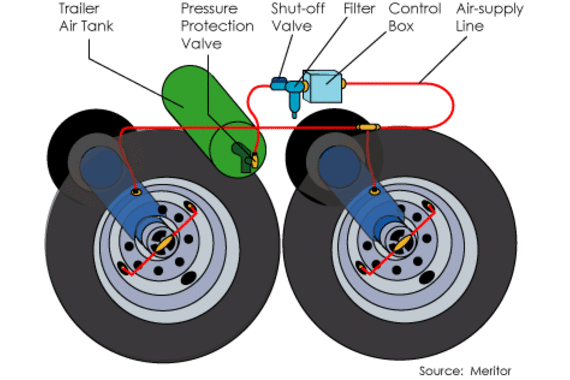 7 psi). So,
7 psi). So,
Put all that into the equation,
So a 50°F drop in temperature lowers the air pressure by 4.5 psi, which is pretty much the same according to our rule of thumb.
5. How Does Tire Pressure Affect Driving
Both overinflation and underinflation affect your tire performance a lot, and serious problems might occur. According to NHTSA(National Highway Traffic Safety Administration), driving on underinflated tires increases a driver's chance of being in a serious accident by 300%. So how will a bad tire pressure affect driving safety? We will explain in detail below.
How tire pressure affects gripThe grip is mostly associated with the size of the contact patch between the tire and the road. An over-inflated tire radically decreases the contact patch while an under-inflated tire does the opposite.
A larger contact patch gives you more grip, and this is the exact reason why lots of racers will intentionally decrease their tire pressures to create a larger contact patch on a dry race track.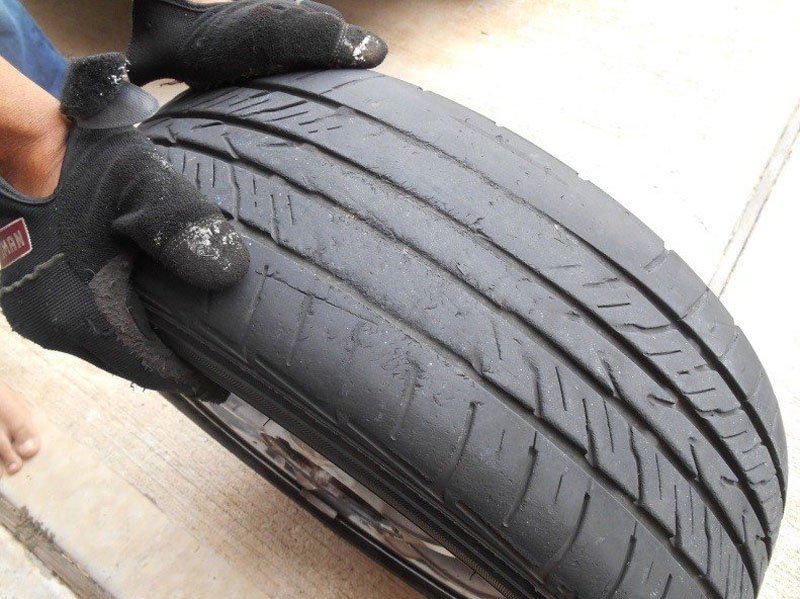
However, despite the fact that an under-inflated tire will cause more fuel consumption and improper tear and wear of the tires, for most daily commuters, it might cause an even scarier problem, which is hydroplaning.
Hydroplaning is a hazardous event when a layer of water builds between the wheels and the road surface, leading to a loss of traction that prevents the vehicle from responding to control inputs. (Appx2)
Hydroplaning occurs when the pressure of the tire pushing on the ground is equal to the water pushing back up on that tire. The size of the contact patch, given the force or the weight of the tire, is the same, directly affects the average pressure the tire's putting down on the road. The larger the contact patch (by deflating the tires), the less pressure it puts on that same area. So there's a causal relationship between your tire pressure and the possibility of a hydroplaning event.
Here's a more visual explanation of what is happening between a properly-inflated tire and an underinflated tire when driving on a wet road.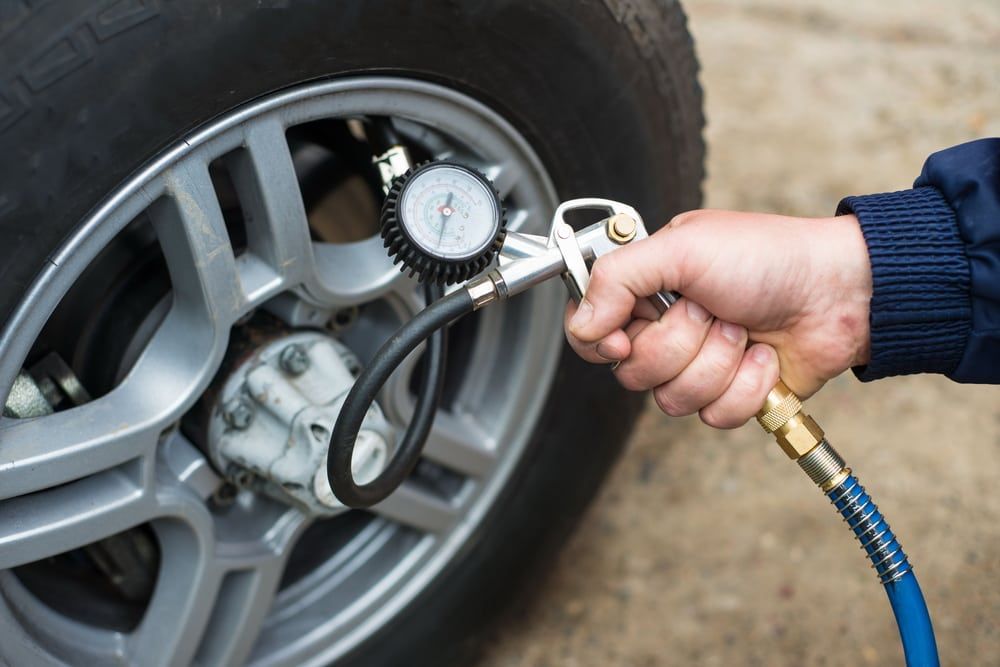
To avoid a hydroplaning event, ALWAYS inflate your tires properly. Also, check your tires' treads, which make the water flow around the tires more efficiently, and of course, driving slow is always a big plus.
How tire pressure affects tire wearThe contact patch directly decides the pattern of the tire's wear and tear. You don't want your tires to wear out prematurely just because you have an over or under-inflated tire.
How tire pressure affects fuel economyImagine you are a ball rolling on the ice, there's no friction between the two surfaces, how much extra force do you need to apply to keep the ball moving? Zero (Thanks, Newton). The same applies to your fuel consumption when it comes to driving on the road. The rolling resistance between your tires and the road significantly affects fuel economy, and by now we should all know the logic behind this, lower tire pressure leads to a larger contact patch, which causes higher rolling resistance, and thus, poor fuel economy.
A Michelin study showed that your tire is accountable for at least 1/5 of your total fuel consumption and a 1-bar of pressure drop (14.5 psi) would increase your fuel consumption by 3-5%.
6. Special Conditions For Tire Pressure Manipulation
There are of course circumstances where you want to manipulate your tire pressure to meet specific requirements. Like the aforementioned track race, or if you are driving on sand, mud, etc. However, as a daily commuter, we strongly suggest you regularly check your tire pressure, preferably once a week and anytime you might take a long road trip, and always keep the tires properly inflated!
Conclusion
Tire pressure is always a hot topic regarding driving safety, and it's important to keep an eye on the tire pressure to maximize fuel efficiency and safety.
Before you go
We'd like to offer you our most popular ZUS Smart Vehicle Health Monitor for FREE to better take care of your car and save $$$ on car expenses. Claim your free unit here.
Claim your free unit here.
Top Posts from nonda:
What is a Car Diagnostic Test & How to DIY?
What Does Check Engine Light Mean & How to Fix it?
Best OBD2 Scanner & Code Reader: Complete Buying Guide
OBD2 Codes: What You Need to Know
Appendix 1 - Ideal gas law - Wikipedia.
Appendix 2 - Aquaplaning - Wikipedia.
From a safety and cost standpoint, tire maintenance is one of the most important things you can do for your car. The easiest way to care for your tires is both quick and inexpensive: maintain the correct tire pressure.
The recommended pressure for tires varies by the type of car and tire. Because maintaining your tires is so crucial to your safety and your car’s overall performance, it’s important to know what tire pressure is correct for your vehicle.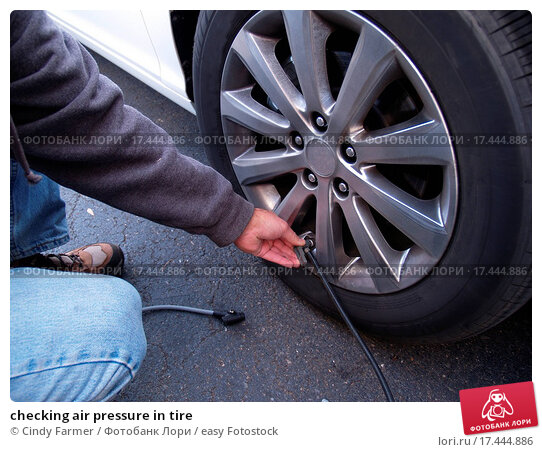
To learn what your tire pressure should be, look for your manufacturer’s recommendation, which is printed on a label inside your car. Depending on the vehicle, this label may be on the edge of the vehicle’s door, on the doorpost or in the glove box. The label will usually give recommendations for the front and rear tires as well as the spare, and it’s important that you stick to those guidelines. Even after you’ve replaced your tires, the same pressure guidelines on your car’s label apply to new tires of the same size.
Pressure recommendations are based on readings taken from a tire pressure gauge. Check the pressure first thing in the morning or wait at least three hours after driving; this provides sufficient time for them to cool back down.1
Driving on underinflated tires is one of the biggest causes of tire failure, according to the National Highway Traffic Safety Administration. And not having enough air in your tires can lead to other problems. Under-inflated tires wear out more rapidly, handle poorly and reduce fuel efficiency. On the other hand, overinflated tires are more susceptible to damage from road irregularities, and they also result in a bumpier ride. Overfilling your tires is just as dangerous as underfilling them, so it’s important you know what is recommended for your vehicle.
Under-inflated tires wear out more rapidly, handle poorly and reduce fuel efficiency. On the other hand, overinflated tires are more susceptible to damage from road irregularities, and they also result in a bumpier ride. Overfilling your tires is just as dangerous as underfilling them, so it’s important you know what is recommended for your vehicle.
Knowing how to check tire pressure is critical to your safety and to keeping your tires in good working order.
When it comes to choosing a gauge, you typically have 3 options:
Put the pressure gauge into the valve stem, making sure the gauge is evenly and firmly pressed onto the stem.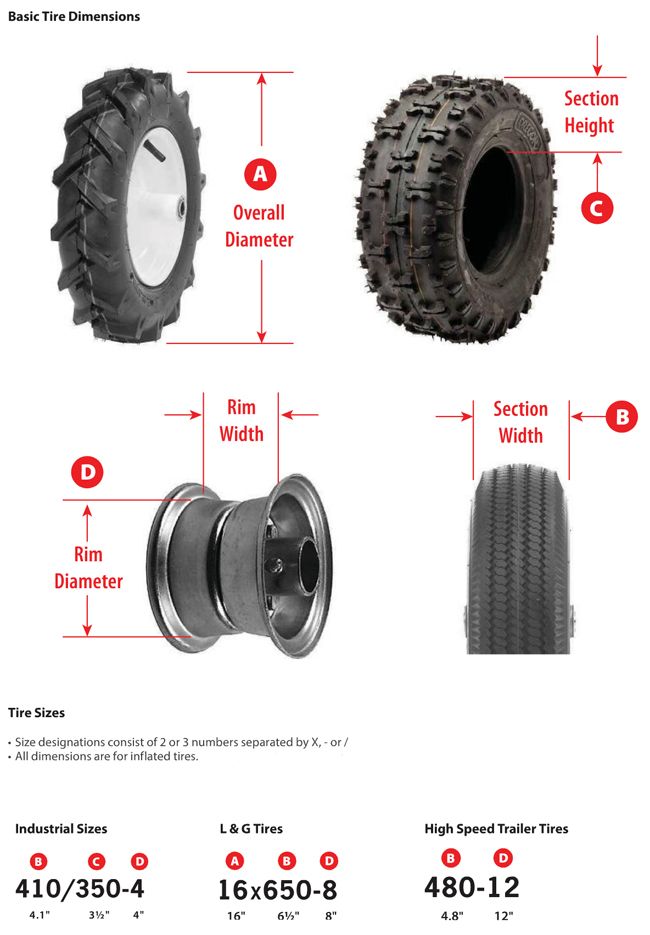 If you’re using a pen-style gauge, read the number on the rod that pops out of the sleeve. Read dial pressure gauges as you would a watch with one hand. With a digital pressure gauge, simply read the number on the screen. 2
If you’re using a pen-style gauge, read the number on the rod that pops out of the sleeve. Read dial pressure gauges as you would a watch with one hand. With a digital pressure gauge, simply read the number on the screen. 2
Find your tires’ recommended PSI in the owner’s manual or on a sticker just inside the driver’s side door. The proper PSI is crucial to your safety and the car’s longevity. Underinflated tires can overheat and wear unevenly; overinflated tires can blow out.1
Temperature has a direct effect on your air tires’ air pressure, so for an accurate PSI reading, make sure to check tire pressure when tires are cold. If it’s cold outside, then you can assume your tires are losing PSI and you should check even more frequently. This will help to ensure maximum safety. Take your car to a mechanic you trust for a professional assessment.3
If you happen to find yourself without a tire gauge and your car doesn’t have an indicator for low tire pressure, there are several things you can do to figure out whether your tires need to be inflated.
Of course, knowing your recommended PSI isn’t enough. You have to ensure you’re checking your tires regularly. Experts recommend you check air pressure once a month.5 Your car’s tire pressure monitoring system TPMS measures the amount of air in your tires to let you know whether your tires are properly inflated. 1
1
Frequently checking your PSI becomes even more important in the fall and winter, when outside temperatures drop and weather conditions fluctuate causing your tires to lose air more quickly. Generally, your tire will gain or lose 1 PSI for every 10-degree change in temperature, which means if you have a sudden drop of 30 degrees, you could lose 3 PSI overnight. If your tires were already low, this could cause tire damage, steering problems or even a flat tire.3
Knowing and maintaining the right air pressure is important to the safety and longevity of your tires. All it takes is a tire pressure gauge and a few minutes of your time.
Once you have the right tire pressure, make sure you also have the right coverage. Learn more about how Nationwide auto insurance can help protect you and save you money.
Sources:
1 https://www.pirelli.com/tires/en-us/car/driving-and-tire-tips/how-to-read/recommended-tire-pressure, Accessed April 2022.
2 https://www.consumerreports.org/cro/tire-pressure-gauges/buying-guide/index.htm#:~:text=There%20are%20three%20types%20of,of%205%20to%2099%20psi., Accessed April 2022.
3 https://www.firestonecompleteautocare.com/blog/tires/should-i-inflate-tires-cold-weather/, Accessed April 2022.
4 https://rxmechanic.com/how-to-check-tire-pressure-without-gauge/, Accessed February 2022.
When choosing the parameters of tire pressure in winter, several factors must be taken into account at once. Primary is the temperature overboard. The fact is that with a decrease in air temperature below zero, the pressure in the tires drops in the range from 0.1 - 0.3 atm. Thus, if the tire is inflated to 2 bar in a warm garage, in severe frost this figure can drop to 1.7 bar.
Such sagging tires, by the way, can be seen on many cars in severe frosts - pay attention! In other words, the passport pressure in the tires indicated in the manual or on the plate on the body are correct for a "cold" tire.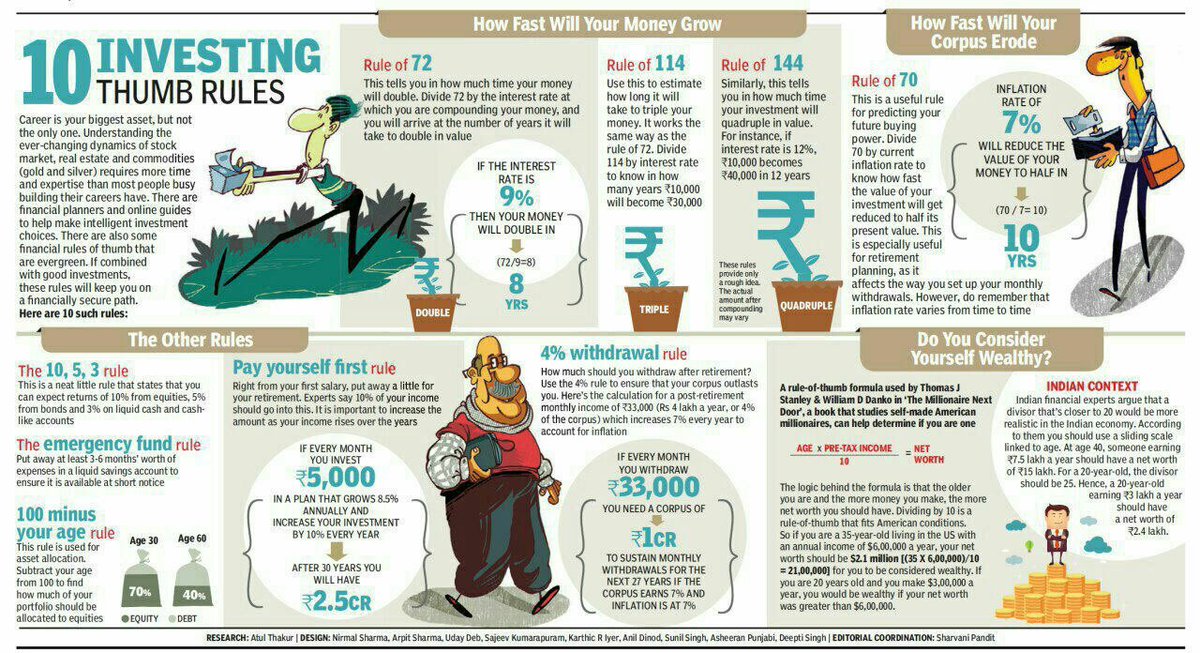 Therefore, it makes sense to check the pumping level "on a cold" - in the morning, in frost. In this case, you can set the pressure in accordance with the recommendations of the automaker. And vice versa. Keep the car in the garage in the cold, do not be lazy with a large minus overboard, increase the value by about 0.2-0.3 bar for each wheel. nine0003
Therefore, it makes sense to check the pumping level "on a cold" - in the morning, in frost. In this case, you can set the pressure in accordance with the recommendations of the automaker. And vice versa. Keep the car in the garage in the cold, do not be lazy with a large minus overboard, increase the value by about 0.2-0.3 bar for each wheel. nine0003
The second point to consider when inflating tires in cold weather is where and under what conditions you plan to drive. If you plan to move at high speeds along the highway, and even in the company of passengers, then it will not be superfluous to increase the pressure in the tires by the same 0.2 - 0.3 bar.
However, this value should not be exceeded too much. After all, seriously pumped tires in winter are no less dangerous, since the contact patch with the road surface will decrease, the elasticity of the polymers will decrease, the handling will deteriorate, and rubber wear will increase. And vice versa - you plan to trudge in a snow rut off-road, you should not pump up the wheels. Moreover, under certain circumstances (for example, when driving in deep snow), it makes sense to trim tires by 0.5 bar in order to increase traction and, accordingly, patency. nine0003
Moreover, under certain circumstances (for example, when driving in deep snow), it makes sense to trim tires by 0.5 bar in order to increase traction and, accordingly, patency. nine0003
Also make it a habit to check your tire pressure regularly, at least once a week, in winter. For this reason, special attention should be paid to this issue. The difference in pressure in the wheels on a slippery road can literally go sideways to you.
Deviations from the regulation as early as 0.3-0.5 bar for at least one wheel can cause skidding and problems with the return of the car to the course. Even if you are not armed with a pressure gauge, just listen to the behavior of your car. nine0003
If one of the wheels is under-inflated or over-inflated, the car may move to the side, and it will be worse to keep on a high-speed straight line and in turns. However, the same karting can be given by rims clogged with snow, and therefore have lost their original balance. Therefore, do not be too lazy to go to the sink, spill the snow-covered disks with water, and at the same time check the pressure in the tires.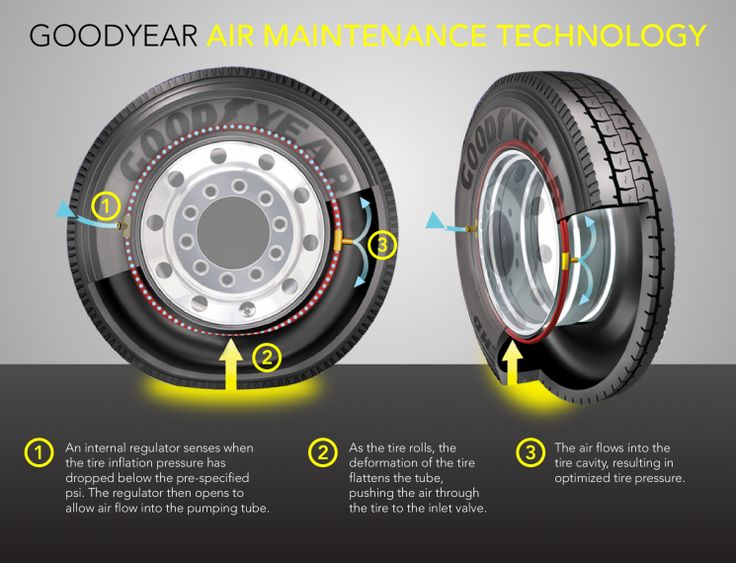
What happens if you ignore these recommendations and drive in cold weather with under-inflated tires? In addition to increased wear and excessive fuel consumption, you will experience a deterioration in handling. The car will be worse to keep a straight line, "float" when changing lanes, and in sharp turns the wheels will begin to "break", which at least worsens handling and, at the most, provokes drifts from the trajectory. nine0003
Hence the main conclusion. A pump with a pressure gauge should become your companion with a significant drop in air temperature in frost. Pump the wheels strictly according to the manual on the street and in excess of 0.2 - 0.3 in a warm garage.
What should be the pressure in the tires of the car? Does it need to be adjusted and what will happen if the pressure is changed in one direction or another?
A conversation between two friends:
— Hello, I have a flat tire!
— Absolutely?
— No, only from below…
Humor from the Net
Let's start with commonplaces.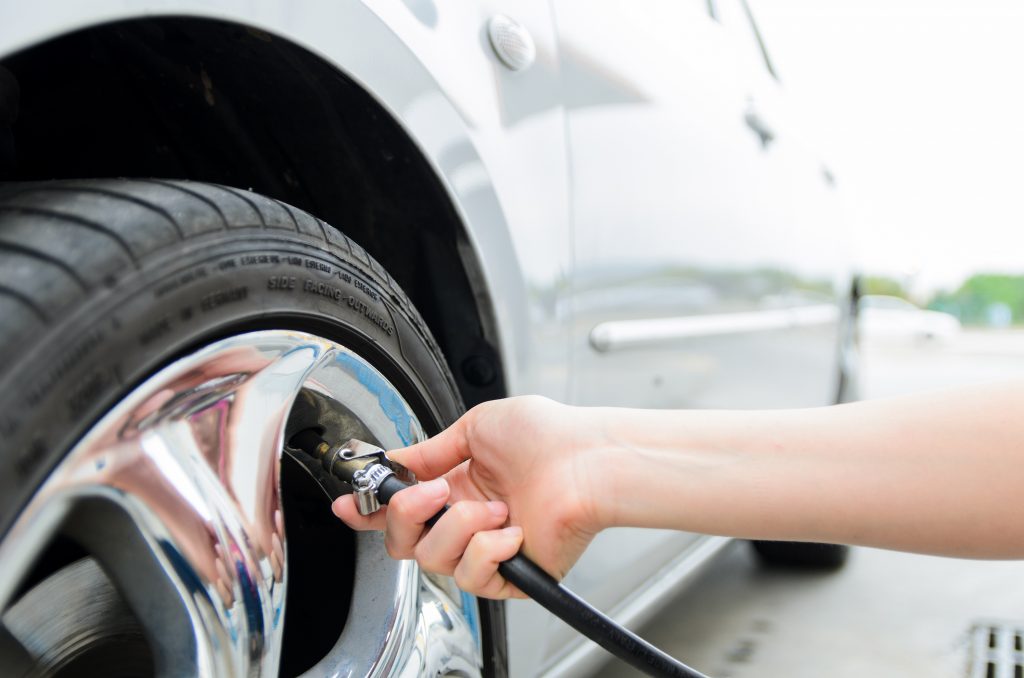 The pressure must be as specified by the vehicle manufacturer. And since the average modern driver usually does not have such information, especially for him, a "cheat sheet" with the necessary numbers is hung on the middle pillar on the driver's side or on the gas tank hatch cover. nine0003
The pressure must be as specified by the vehicle manufacturer. And since the average modern driver usually does not have such information, especially for him, a "cheat sheet" with the necessary numbers is hung on the middle pillar on the driver's side or on the gas tank hatch cover. nine0003
A relatively rare solution: the "reminder" is located on the gas tank flap.
A relatively rare solution: the "reminder" is located on the gas tank cap.
An important point: pressure should be measured only on cold tires. By the way, especially for pedants: cold tires are those on which the car has been without movement for at least 5 hours.
This "cheat sheet" nestled on the driver's door. An example of how tire pressure recommendations change depending on tire size. nine0003
This "cheat sheet" nestled on the driver's door. An example of how tire pressure recommendations change depending on tire size.
An example of how tire pressure recommendations change depending on tire size.
Since car manufacturers allow the use of tires of different sizes, the pressure may also be different. In addition, the pressure in the front and rear tires has the right to both differ and be the same.
And here there is no difference in recommendations: what is in front, what is behind is the same. nine0003
And here there is no difference in recommendations: what is in front, what is behind is the same.
Related materials
Seasonal tire change: everything car owners need to know
Reduced pressure leads to an increase in tire deformation, greater heating during wheel rolling, accelerated wear of the outer tread tracks. Perhaps even a violation of the integrity of the frame. As a result, fuel consumption increases. If you hit a hole in the road, the likelihood of damage to both the disk and the tire is higher. nine0003
If you hit a hole in the road, the likelihood of damage to both the disk and the tire is higher. nine0003
Increased pressure is an overstrain of the cords, increased wear of the middle part of the tread. In addition, when driving on a bad road, the shocks that are transmitted to the suspension and body will become more noticeable for riders. When hit in a pit, the likelihood of a tire burst increases.
Uneven pressure on all four wheels is the worst thing! At the same time, the car, while driving, inevitably leads the wheels with lower pressure to the side - in fact, sideways movement begins.
Tube tires of the past required a weekly check, especially before the advent of butyl tubes. Then the pressure began to be checked less often, and nowadays, as a rule, they are limited to visual inspection.
Tube tires of the past required a weekly inspection, especially before the advent of butyl rubber tubes.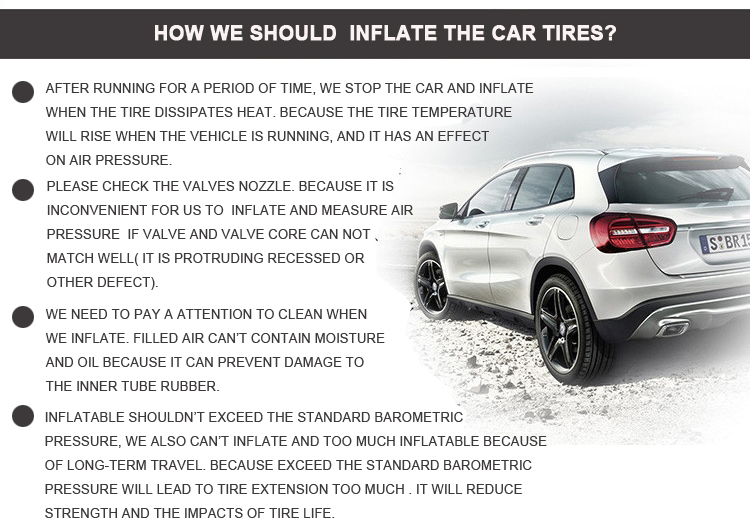 Then the pressure began to be checked less often, and nowadays, as a rule, they are limited to visual inspection.
Then the pressure began to be checked less often, and nowadays, as a rule, they are limited to visual inspection.
In a good way, you need to check the tire pressure at least once a month. And before a long journey - just a must. nine0003
Related materials
Budget Tire Compressor Test: Wrong Bees
The air pressure in an enclosed space changes by approximately 0.1 bar for every 10 degrees of temperature change. This allows, having installed summer wheels in April, not to worry about the pressure in them until the end of August, when the air temperature begins to drop. Having pumped up the wheels at the end of summer, you can already reach the seasonal shift. But having installed winter tires in October, with the first frosts, you should check the pressure a couple more times: when the temperature drops to minus ten, fifteen, and when it goes over minus twenty. But from the middle of winter until the moment of changing the wheels to summer ones, there is again a period of relaxation.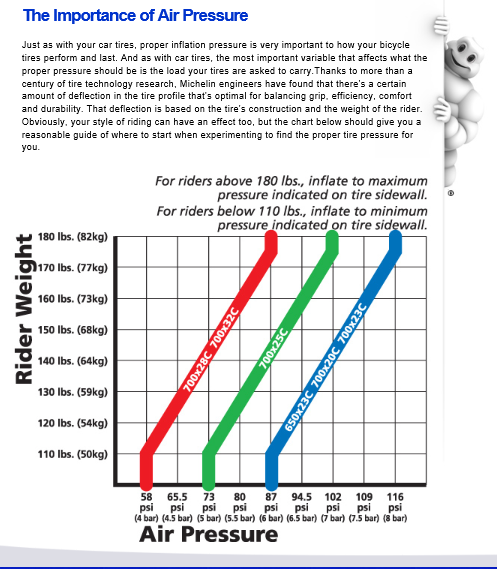 nine0003
nine0003
Electronics are increasingly thinking for us. Now, a tire pressure monitoring system is being installed on parts of production cars. Moreover, some simply read the wheel speeds through the ABS sensors: after all, a flat tire rotates faster, since its radius is smaller than that of inflated wheels. There are also sensors that evaluate the amount of air pressure and send information via radio to the "brains" of the car. Such devices can also be purchased separately: sensors - in the wheels, and the receiver - in the car. nine0003
By the way, a lot depends on the road you are going to take.
The owner's manuals supplied with the vehicles indicate that it is recommended to increase the pressure by 0.2-0.3 bar before driving for a long time on expressways. We advise you to follow these recommendations on all cars: it will not get worse.
The operating instructions supplied with the vehicles state that it is recommended to increase the pressure by 0. 2-0.3 bar before driving for a long time on highways. We advise you to follow these recommendations on all cars: it will not get worse. nine0003
2-0.3 bar before driving for a long time on highways. We advise you to follow these recommendations on all cars: it will not get worse. nine0003
I don’t want to discuss overload: this, you see, is not the case. But, unfortunately, many deliberately overload the car several times a year, not only stuffing the interior and trunk to the eyeballs, but also attaching a trailer, which additionally loads the rear wheels of the tractor. In such cases, we advise you to increase the pressure in the rear tires by at least 0.2–0.3 bar. Tires will only thank you.
If you doubt the accuracy of your pressure gauge, then we advise you to check it immediately after leaving the tire shop, where you were set the obviously necessary pressure, to measure it with your own measuring device (separate or as part of the compressor). So you determine whether your pressure gauge is "lying" a lot. For the future, right on the dial, you can put a mark of the correct value. nine0003
nine0003
Of course, it is better to have your own, known to be correct pressure gauge, but such a toy is not cheap.
Of course, it is better to have your own, known to be correct pressure gauge, but such a toy is not cheap.
If terrible ice has caught you on summer tires, for example, in the country, and you need to drive some distance along an absolutely icy road by any means, then you should reduce the pressure in the tires to approximately 1.6 bar. Is it bad for tires? Yes. But an accident will cost more. In addition, in such a situation, one does not have to wait for high speed, and overheating of tires at near-zero temperatures most likely will not happen. nine0003
Everyone knows what caused the excellent maneuverability of Soviet tanks? That's right: wide tracks, that is, low pressure on the ground. We, having an ordinary, non-all-wheel drive car, are also able to provide it with a similar cross-country ability. If the wheels of the car sink into sand, snow or sticky mud, then it makes sense to lower the tire pressure. And not only driving, but also driven wheels.
If the wheels of the car sink into sand, snow or sticky mud, then it makes sense to lower the tire pressure. And not only driving, but also driven wheels.
We know from experience that it is often possible to get out of the "black spot" by reducing the pressure to 1.2 bar. nine0003
We know from experience that it is often possible to get out of the "black hole" by reducing the pressure to 1.2 bar.
In a very critical situation, if you know that you have a fairly narrow disc and a relatively wide tire (such a wheel has a lower chance of self-disassembly), you can reduce the pressure to 1.0 bar.
Stalled on wet grass? Try to relieve pressure.
Stalled on wet grass? Try to relieve pressure.
Pressure reduction is also useful in other cases - for example, to overcome diagonal hanging. If you reduce the pressure in the wheels on which the car rests, their height will decrease and there will be a chance to “hook” on the suspended wheels.